We’ve been keeping an eye on this Red-tailed Hawk nest in the west desert for about three years now. Our visits to the nest probably average once per week and this spring while the parents were incubating and then while the chicks were very young there wasn’t much for us to see but recently the activity on and around the nest has picked up significantly.
We don’t approach the nest closely so these images have been substantially cropped.
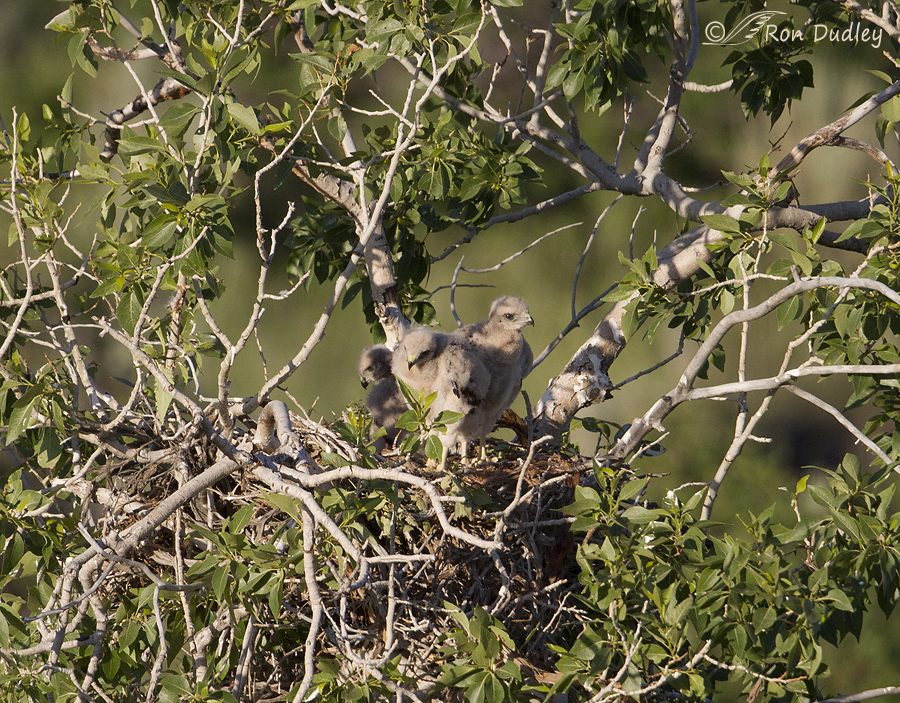
1/3200, f/5.6, ISO 640, Canon 7D, Canon EF500mm f/4L IS II USM +1.4 tc, not baited, set up or called in
Eight days ago we could finally see three chicks on the nest. All three looked healthy and active which absolutely delighted me after all that time of wondering how things were going.
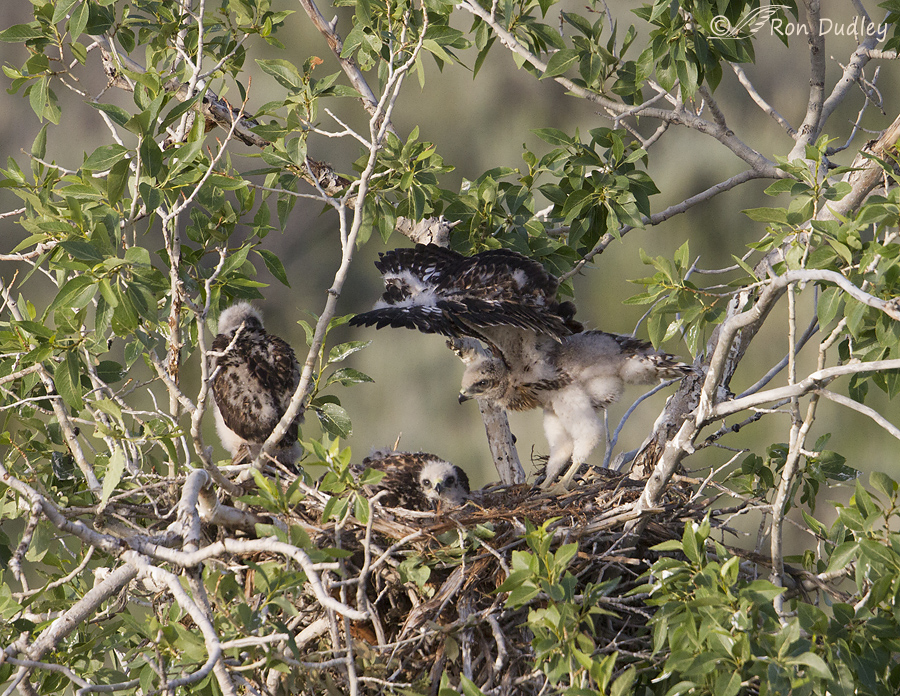
1/1600, f/5.6, ISO 800, Canon 7D, Canon EF500mm f/4L IS II USM +1.4 tc, not baited, set up or called in
Yesterday we visited the area once again – what a difference a week has made in the appearance of the youngsters!
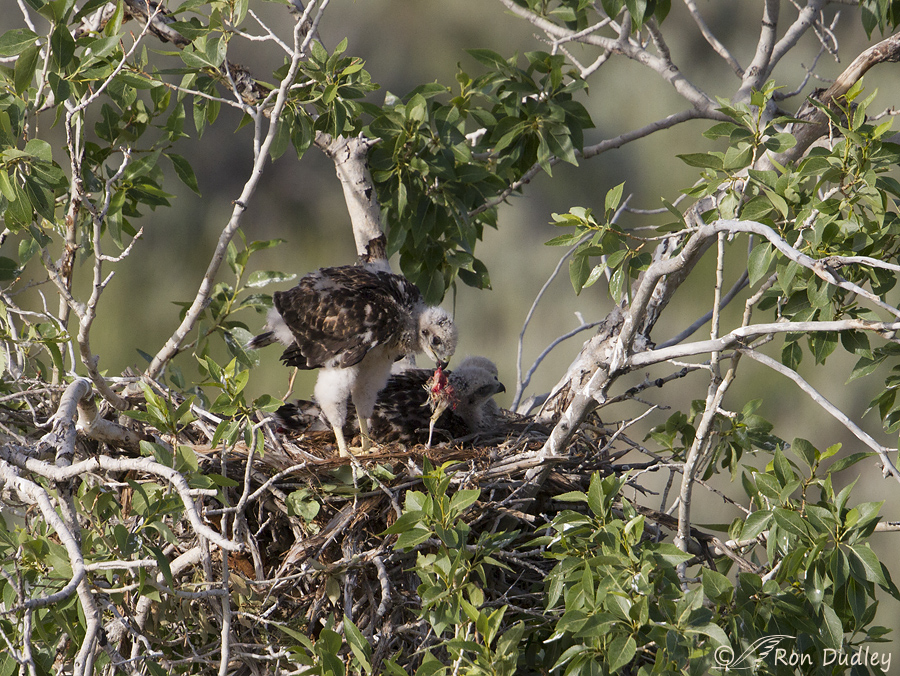
1/2000, f/5.6, ISO 500, Canon 7D, Canon EF500mm f/4L IS II USM +1.4 tc, not baited, set up or called in
While we were there one of the parents brought in a meal – a bird of some kind. Two of the chicks seemed uninterested but the third one chowed down on it. Until they’re about 4 1/2 weeks old the parents tear the food apart for the youngsters but this one seemed quite capable of independent feeding.
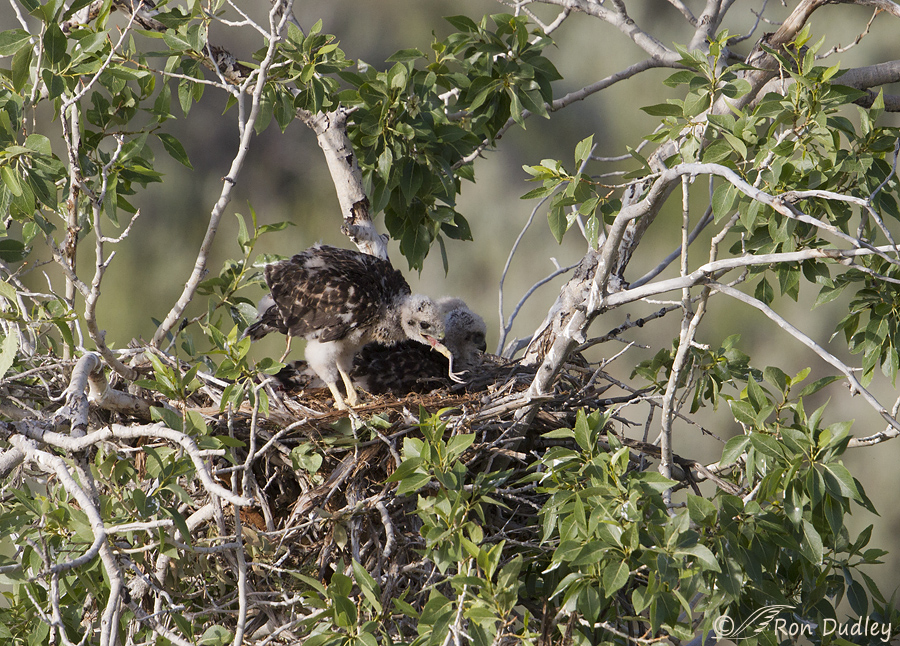
1/1600, f/6.3, ISO 500, Canon 7D, Canon EF500mm f/4L IS II USM +1.4 tc, not baited, set up or called in
Here a leg and foot are about to go down the hatch.
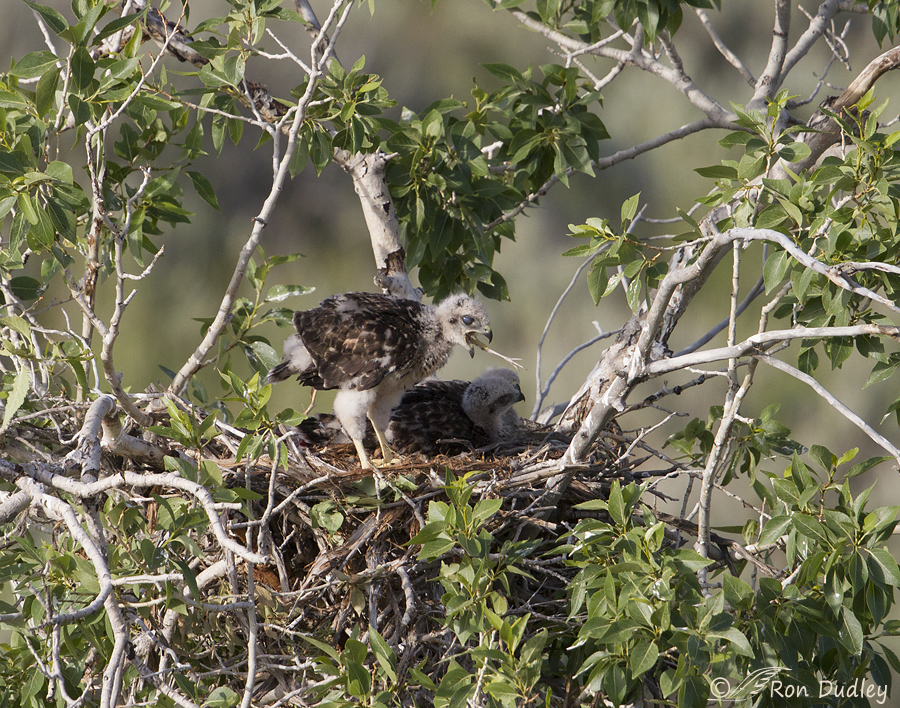
1/2000, f/5.6, ISO 500, Canon 7D, Canon EF500mm f/4L IS II USM +1.4 tc, not baited, set up or called in
I thought it might be a struggle to get it down but it really wasn’t. The second leg soon followed. The eye of the chick looks unusual (what many photographers call “steel eye”) because the nictitating membrane is closed to protect it during the swallowing process.
I worry about these chicks for a couple of reasons. The nest is in a relatively remote area but it’s quite visible from a rough dirt road and the nest-tree is in a ravine that places the nest slightly below eye level. This is a recipe for disaster should any humans bent on mischief notice the nest. So far, all is well.
But there’s another reason I’ve become so attached to these adorable young hawks.
1/2000, f/6.3, ISO 500, Canon 7D, Canon EF500mm f/4L IS II USM +1.4 tc, not baited, set up or called in
On March 25 I photographed their parents mating. It’s very possible that it was this mating that resulted in the conception of the chicks. For some reason that possibility has heightened my attachment to the young hawks.
I sure hope they make it – all three of them!
Ron


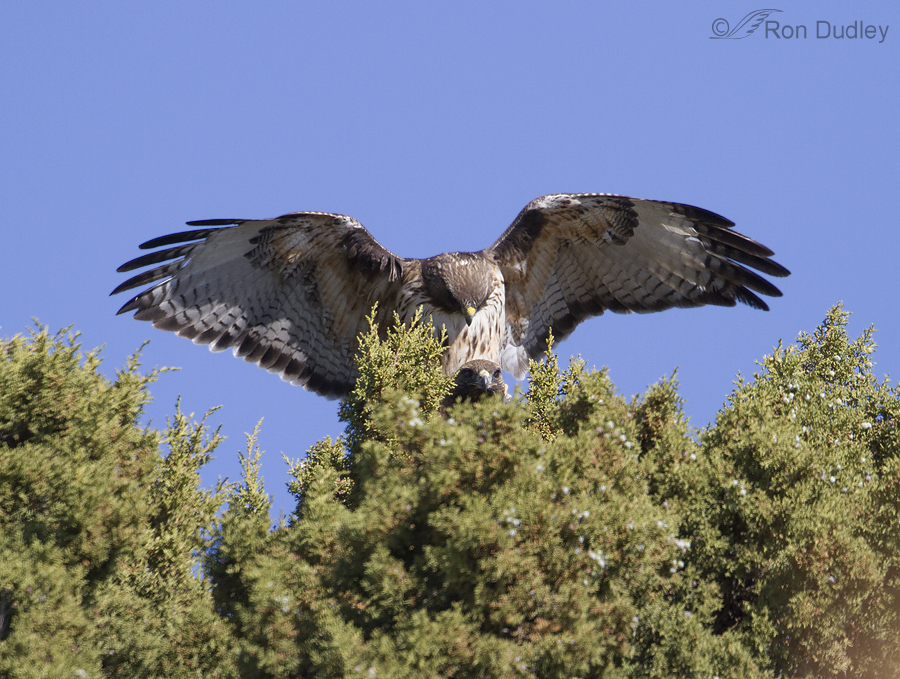
I missed this earlier, was away so am happy to see these now.Hopefully you wil have more photos before they leave-they grow up so quickly.
Terrific series of images, quality photos and narrative, Ron! How could one take such intimate pictures of anything and NOT become emotionally attached? I know I can’t. Perhaps therein lies salvation for our species. Keep it up!
Those raptors grow up so fast, don’t they??? Amazing series of photographs. After watching online cams of raptors for over four years, I’ve gotten over the gag reflex. I’m sure you have opinions of webcams situated on wildlife nests, but it has opened an entire new world for me. Thank you so much for sharing your great insights to feathered photography!
Of course you are emotionally attached to them. How could you not be? I hope all five of them make it. And like Patty I love their britches.
I love this series…especially love their fluffy pantaloons! Will worry with you until they’re safely on their way…the red tail is extra special to me…the little brother to the eagle….HAPPY FATHERS’ DAY to all, fathers or not!
What a wonderful series of shots! Thanks for sharing!
Charlotte
Thank you, Charlotte.
Thanks for sharing! I hope they make it too. I am still sad that the nest I was watching in Magna was destroyed when the tree it was in toppled in a wind storm.
Sadly, that kind of thing happens often, Delores. I’ve seen several raptor nests this spring that were active in previous years but have now apparently been wind-damaged and aren’t being used.
How could one not be attached to these chicks? Baby birds in general are special, but baby raptors are even more so. While all of these are wonderful shots, my favorite is the last one of the chick, with the leg sticking straight out of it’s mouth. I’m having hard time deciding between laughing and gagging… Great post!
“I’m having hard time deciding between laughing and gagging”
That made ME laugh, Susan…
Great story and series of wonderful photos. So dramatic to scroll down and see the probable parents!! Loved this.
Thank you, Ellen. Actually it’s more than just “probable” that these are the parents. I’m sure they are, for a variety of reasons.
I love these photos. Thank you. I was following a nesting pair of red-tails in the Salt Lake Cemetery for years and years, until last year they moved their nest to a nearby tree and it’s no longer visible with a scope or camera until the babies are much bigger. I feel sad that I can’t watch them grow, but there must be some reason the new spot is better.
Kelli, perhaps they fell the new spot is better because they feel more isolated and safe from folks wandering the cemetery, noisy lawnmowers, etc. Thank you.
Wow! Those are AMAZING images, Ron! I love raptors, but haven’t been able to see any chicks, other than on TV. Something to look forward to. There is a nest on the border of my grandpa’s property down here. I’ve seen the adults building it. I think they’re Harrier’s. I need to see if I can see any chicks. They are high up though; probably 20 feet off the ground.
Thanks for sharing these photos. I truly enjoyed them.
Thanks very much, Wade. I doubt your hawks are harriers because harriers nest on the ground. Perhaps they’re Red-tails or Swainson’s…
Wonderful story-telling with these photos. What amazing little faces! You realize now you’ll have to keep us posted… I completely understand the attachment to these young ones…. I’ve been tuning in to the Red-tailed Hawk cams at Cornell Lab of Ornithology since the 3 young birds in that nest became quite active about a week or so ago. One fledged early, a week ago and only 2 days ago was finally strong enough to get back to the nest. (It was fed diligently by the mother while it was out of the nest.) But, moreover, there are usually some 2000 or so fellow hawk-watchers at any given time, too. They seem to be from all over the world even! So I know all of those hawk lovers would completely understand that emotional attachment! Tune in to the camera sometime soon and you might get to watch the next little one fledge from the nest’s “fledge ledge”! (The nest is atop an athletic field light tower, smack dab on the campus of Cornell. )
Barbara, I’ve seen quite a few posts and info on those Cornell Red-tails. They have quite a following and I fully understand why. And yes, I imagine I’ll be “keeping you posted”…
Ron, they’re exquisite photos – something quite magical about the light around the chicks in the leaves – and to have the conception photo, too! Very moving.
Thank you, Alison.
It’d like they were put together with cotton balls in the first shots then someone snuck in to stick feathers on them.
I like your analogy, Arwen.
Ron, you always weave a great narrative with your Art and your Heart. Thank you .
I love the way you put that, John. Thanks very much!
Wonderful shots and story Ron, much appreciate that you have stayed with this family and have recorded their development.
Thank you, Dick. Doing so has been a huge treat for me.